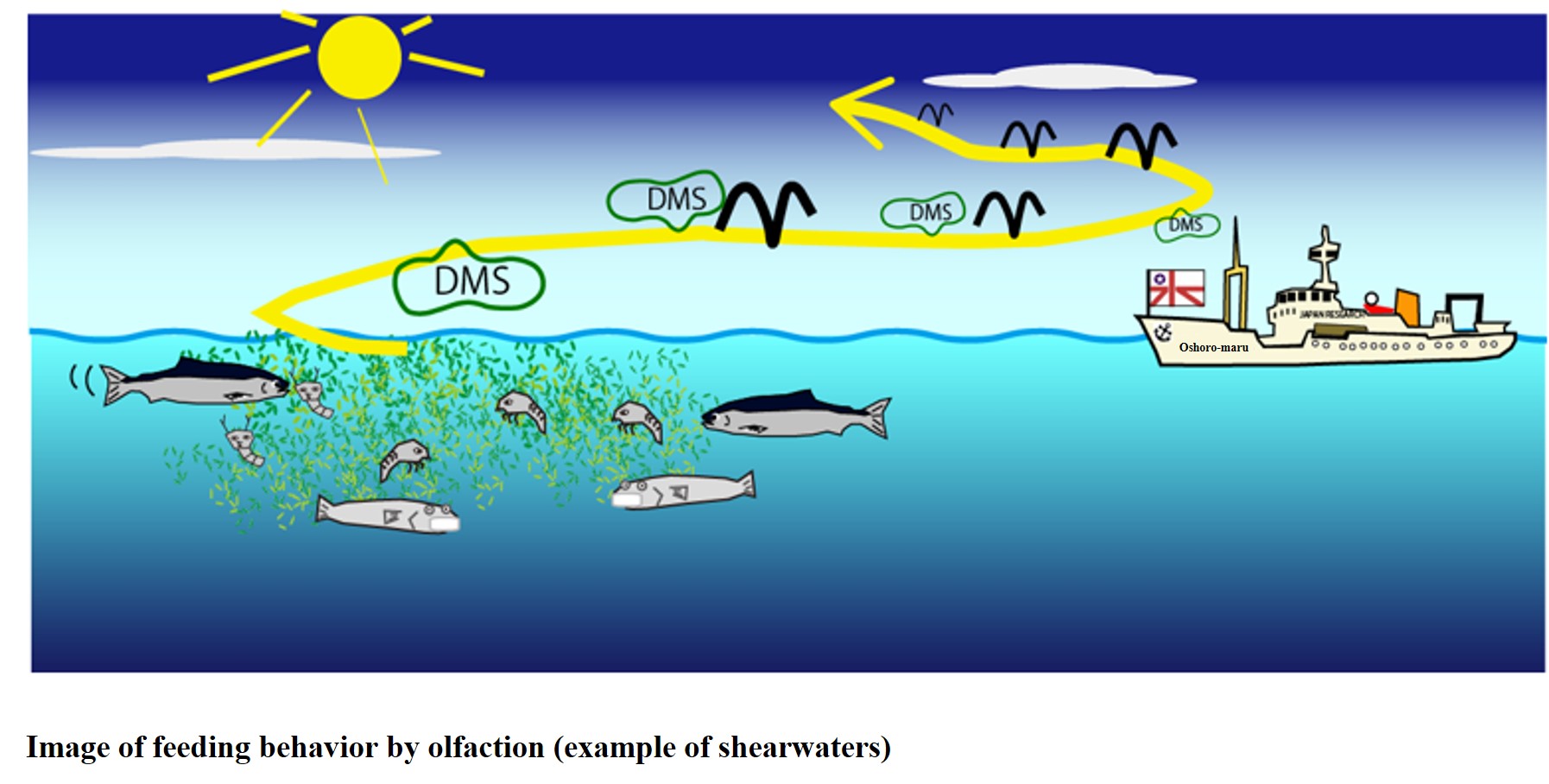Introduction to experimental studies of olfaction on feeding behavior of marine animals
Since I mentioned this and that about the smell of organosulfur gas, I will incidentally mention its relationship to the feeding behavior of seabirds. Even humans can feel "smell bad" organosulfur gas, naturally other animals can also smell it. Since a lot of the gas is released from areas of active biological production, it may be a marker for pinpointing high-production areas from the sky. Might it help seabirds flying over the ocean to find schools of fish? This was the idea behind the study of "seabird olfactory feeding behavior" (Nevitt, 2000). When wooden boards were coated with DMS and floated in the ocean for observation, it was found that shearwaters were attracted at a significant rate. Other studies have shown that the shearwaters have a habit of heading toward areas of dense DMS in the atmosphere, which helps them locate high-production areas. However, they may not rely solely on DMS, but may vary from seabird experience, intuition, visual observation from above, and random searches. It may be only that they happen to be attracted to a feeding area when they sense the delicious smell of DMS. Not only the shearwaters but also their allies, penguins (Cunningham et al., 2008; Wright et al., 2011) and mammalian seals (Kowalewsky et al., 2006), have been found to respond to DMS.

